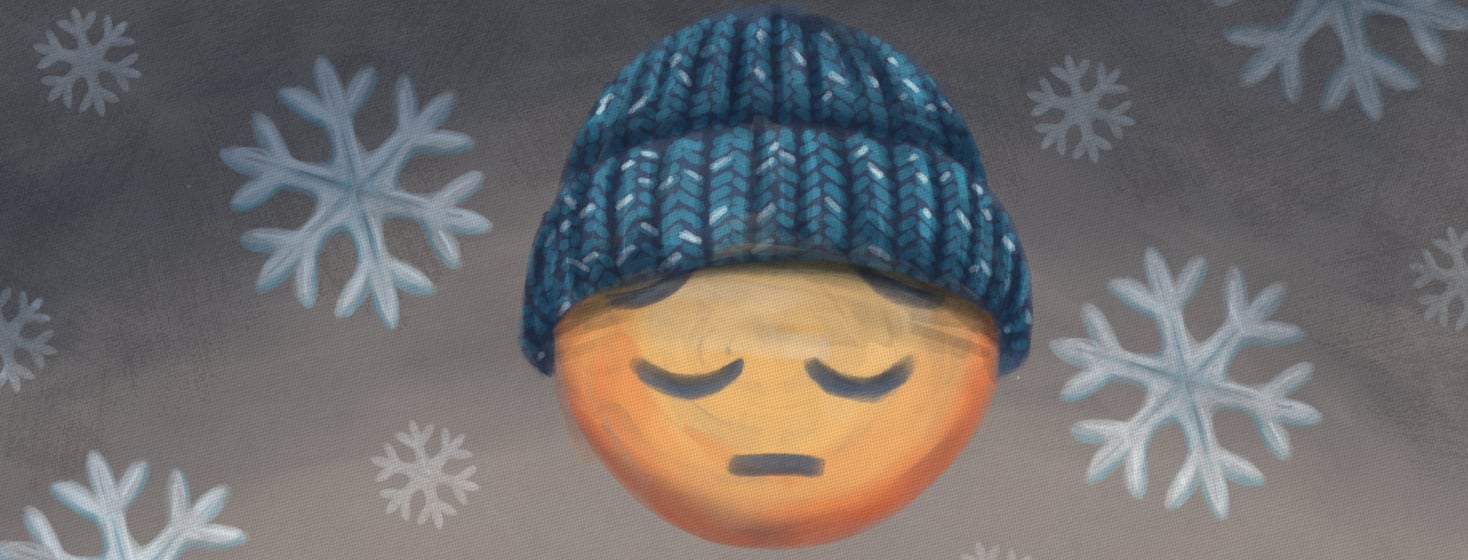Winter Blues or Seasonal Affective Disorder
Oh, the weather outside is getting a bit frightful. Cold has moved in and with it less daylight for many. The winter months are here. Days of feeling super tired with a lack of motivation. Moments that one may have difficulty concentrating. The season when some may think poorly of themselves. You know, those days where depression sets in quickly because it’s cold and dark.
What is this looming issue?
I have had some winters where I couldn’t even get out of bed. The depression was strong, and the lack of sun and daytime hours really took a toll on me. The winter blues is what call it. It is something that I work hard even today to try and prevent.
After a while, I have had to seek help. Upon visiting with a therapist, she mentioned something called Seasonal Affective Disorder or SAD. Although I heard of it, I was clueless as to what it was officially.
Seasonal Affective Disorder (SAD)
Seasonal Affective disorder is described as a form of depression that affects people mainly during the fall and winter months. The lack of light can disturb the internal clock and lead to some depression. According to studies, the change in seasons may influence the body’s melatonin and serotonin. Melatonin is said to help you get to sleep and serotonin is believed to help you feel more awake.
Getting educated about SAD
Once the doctor explained to that melatonin is boosted in the dark and serotonin is increased with sunshine or light, it was an eye opener. It helped me realize maybe my "winter blues" was more than just a sad feeling, but a SAD feeling. Eventually, I understood it was something that my body was missing and had to find remedies to keep it in check.
How I worked through SAD
There were many things I needed to work on to get my winter blues in check. Here are a few tips that may help you as well.
Seek therapy
First, there was no shame to seek help. It was important to get out of the funk. Being able to ask the doctor for a therapist referral was key. Getting educated about what was going on helped tremendously.
Get outside
Second, working out and getting outside as a former athlete made me feel better. It worked for me to tap into the beauty of moments in each day. It's cold, but it is worth it to feel better and enjoy life beyond it all.
Set a new routine
Third, getting up in the morning can be the hardest. So, I started a new routine of waking, sitting on the side of the bed, reciting affirmations and then opening the shades to bring the sun in. This helped tremendously to get started with good energy and intentions.
Redecorate
In addition to a new routine, making the bedroom a place that is lively and bright is pivotal in changing how you feel. This helps to set the mood from the moment of waking.
Meditation
Now that the routine and look is set, being a mindful meditator created direct change. Having to work extra hard in the winter months to get my mood in check was easier with this healthy wellness routine. As soon as the weather shifts meditation and mindful moments become more important. Making time just to myself to set intention in the day is a powerful reminder of now.
Change diet
Lastly, I found that certain foods exasperated that winter blues feeling. I worked to change my taste buds to eat foods that boosted my mood. Foods like dark leafy greens, salmon, almonds all helped me. In addition, keeping a food journal assisted in understanding what worked well for my body.
Other ways to help yourself
Finally, some people are able to do light therapy. This is known as phototherapy. Ultimately a light box or lamp helps to mimic sunlight and can help with energy. I have been unable to do this because I am highly photosensitive, and this causes me flares.
The winter blues can really get you down. It’s important to explore what’s going on and get educated if it is just the winter blues or seasonal affective disorder. Hopefully the tips presented can help with overcoming SAD and enjoy life beyond the constraints of winter.
This or That
Have you ever experienced winter blues?

Join the conversation